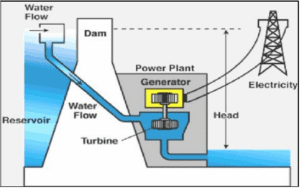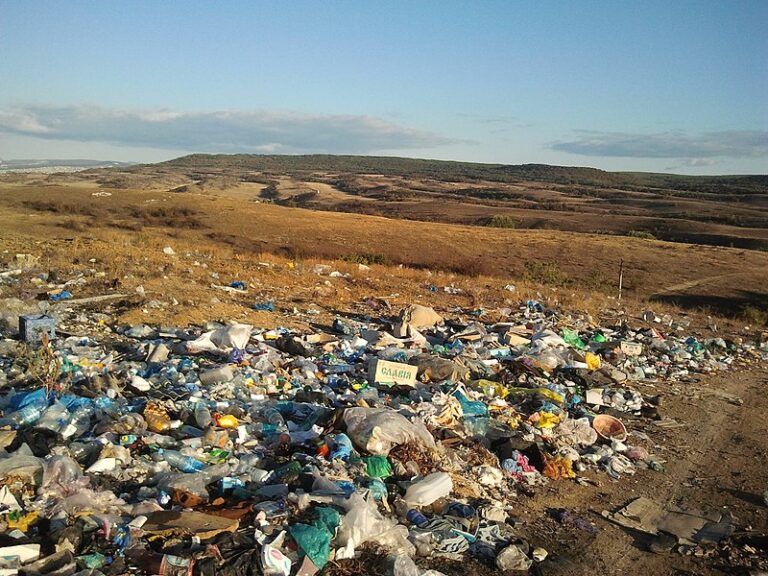Definition of Hydro Energy, Principle, Sustainability, Uses
Hydro energy is a type of renewable, clean energy that can be extracted from the dynamics of fluids like water. This article discusses the definition of hydro energy, as well as its working principle, sustainability, and uses, as outlined below;
-Definition of Hydro Energy: 5 Ways to Define Hydro Energy
-How Hydro Energy Works: The Hydro Energy Working Principle
-Assessment of the Sustainability of Hydro Energy
Definition of Hydro Energy: 5 Ways to Define Hydro Energy
Hydro energy is a form of potential energy stored in water, that can be released and converted through hydrological and hydrodynamic processes [1].
The above is a basic definition of hydro energy that highlights its source and primary attributes. Below is an alternative hydro energy definition that describes it within the context of sustainability and renewable energy;
Hydro energy is a clean, renewable and sustainable type of energy that is derived from water or similar fluids, and which can be categorized among other renewable energy options like solar, wave, wind, geothermal and bioenergy.
Examples of hydro energy can be used to further understand this type of energy. The alternative definition of hydro energy below mentions some of them;
Hydro energy is a form of renewable energy from fluids (mainly water) which can be observed, extracted or converted when fluid-flow occurs, as in examples like hydroelectric turbine mobilization, and natural wave propagation.
The definition of hydro energy below highlights some of its uses;
Hydro energy is renewable energy contained in water masses, and used for various purposes like hydroelectricity generation with water dams and turbine generators, in sustainable agriculture, green economic development, conventional power plant back-up, and energy transition.

Lastly, the definition of hydro energy is outlined solely on the basis of its role in sustainable development and green energy adoption;
Hydro energy is water-derived clean energy that has minimal environmental impact, and huge potential for climate change mitigation, sustainability and circular economy in the energy sector and beyond.
How Hydro Energy Works: The Hydro Energy Working Principle
Hydro energy works in three steps namely; fluid mobilization, energy capture, and energy conversion.
Each of these is discussed briefly below;
1). Fluid Mobilization (in explanation of How Hydro Energy Works)
Basically, hydro energy is a form of potential energy, that occurs in a scenario where water is acting as an energy storage system, like a battery.
This means that hydro energy is always present in any given mass of water, by virtue of the compositional and positional equilibrium of that mass.
Usable hydro energy is produced when water or any similar fluid is mobilized. This energy is the potential form which has been converted to kinetic energy through motion.
It is the observable energy in flowing water, ocean waves, and other hydrodynamic entities; and it is the form of hydro energy that can be actively captured and converted.
2). Energy Capture
Hydro energy capture is achieved using equipment that can effectively receive and transmit energy from moving fluids.
An example of such an equipment or body is the turbine.
3). Energy Conversion (in explanation of How Energy Works)
After hydro energy has been captured it is almost immediately converted to another form; which is mechanical in most cases.
The mechanical energy can further be converted to heat or electricity.
Assessment of the Sustainability of Hydro Energy
Hydro energy is both renewable and clean; because it is derived from water that is recycled and replenished naturally, and does not require any combustion, chemical reaction or phase-change to occur.
The renewable nature of hydro energy comes from natural recycling of water through evaporation and condensation.
This is one of the factors that make hydro energy sustainable, alongside the fact that it is clean and does not produce any notable form of emission.
However, intensive utilization of hydro energy can still have some impacts on the ecosystem, by altering the natural distribution and flow dynamics of water resources [2].
Uses of Hydro Energy
Hydro energy is used for;
1). Electricity generation
2). Climate change mitigation
4). Energy transition facilitation
5). Control of hydro-mechanical systems
Conclusion
Hydro energy is a sustainable type of energy stored in water, and released through hydrodynamics and energy conversion.
How hydro energy works step by step is as follows;
1. Fluid Mobilization
2. Energy Capture
3. Energy Conversion
Hydro energy is used for; electricity generation, climate change mitigation, sustainable irrigation, energy transition facilitation, and control of hydro-mechanical systems.
References
1). Kiraga, M. (2021). "Hydroelectric Power Plants and River Morphodynamic Processes." Journal of Ecological Engineering 22(7):163-178. Available at: https://doi.org/10.12911/22998993/139068. (Accessed 15 January 2023).
2). Kuriqi, A.; Pinheiro, A. N.; Sordo-Ward, A.; Bejarano, M. D.; Garrote, L. (2021). "Ecological Impacts of Run-of-River Hydropower Plants-Current Status and Future Prospects on the Brink of Energy Transition." Renewable and Sustainable Energy Reviews 142:110833. Available at; https://doi.org/10.1016/j.rser.2021.110833. (Accessed 15 January 2023).



